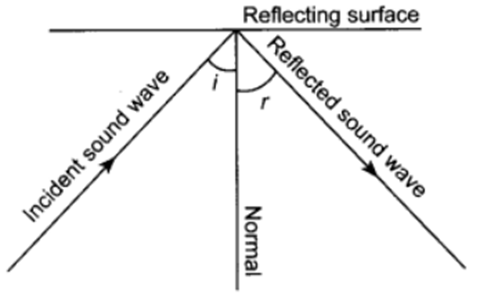- Books Name
- Science Made Easy Science Book
- Publication
- Science Made Easy
- Course
- CBSE Class 9
- Subject
- Science
Sound Waves as Longitudinal Waves
• A wave in which the particles of the medium vibrate back and forth in the same direction in which
the wave is moving, is called a longitudinal wave.
→ When we push and pull the slinky compression (number of turns are more or closer) and
rarefaction (number of turns are less or farther) are formed.
→ When a wave travels along with slinky, its each turn moves back and forth by only a small
distance in the direction of wave. So the wave is longitudinal.
→ The direction of vibrations of the particles is parallel to the direction of wave.

• When one end of a slinky is moved up and down rapidly whose other end is fixed, it produces
transverse wave.
→ This wave possess along the slinky in horizontal direction, while turns of slinky (particles) vibrates
up and down at right angle to the direction of wave.
→ Thus in transverse wave particles of the medium vibrate up and down at right angles to the
direction of wave.
→ Light waves are transverse waves but they don’t need a material

Laws of reflection
• The incident sound wave, the reflected sound wave and the normal, all lie in the same plane.
• The angle of incident of incident sound wave is equal to the angle of reflection formed by the reflected sound wave, that is, i = r

Echo
• When we hear the same sound again and again in a medium it is called Echo.
• The sound or echo persists in our brain for 0.1 seconds. This means that the difference between sound and its echo should be at least 0.1 seconds.
• It is produced as a result of reflection of sound through a medium. If sound reflects more than once we may hear multiple echoes.
Reverberation: Repeated reflections of sound results in persistence of sound and is called reverberation.
Use of Reverberation of Sound: Following instruments use this property of sound:
1. Megaphones, Shehanais, Trumpets
2. Stethoscope
3. Curved dome of concert halls
Advantages of Multiple Reflection of Sound
• Horns, trumpets, loudhailers or megaphones are designed in such a way that sound can travel in a particular direction only without spreading out everywhere. This makes it easier for the audience to listen to the speaker. All these instruments work on the phenomena of multiple reflections of sound.
• The multiple reflections in a stethoscope tube make it possible for the doctors to listen to a patient’s heartbeat.
• Concert halls are generally covered so that sound can reflect through it and reach the wider audience.
• Human auditory range is between 20 Hz and 20000 Hz.

 Science Made Easy
Science Made Easy
